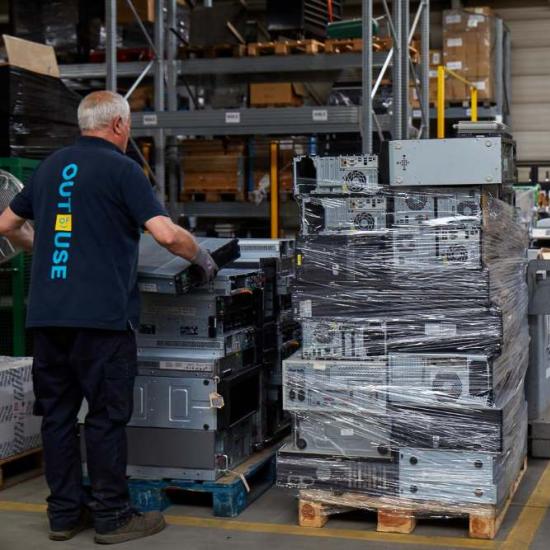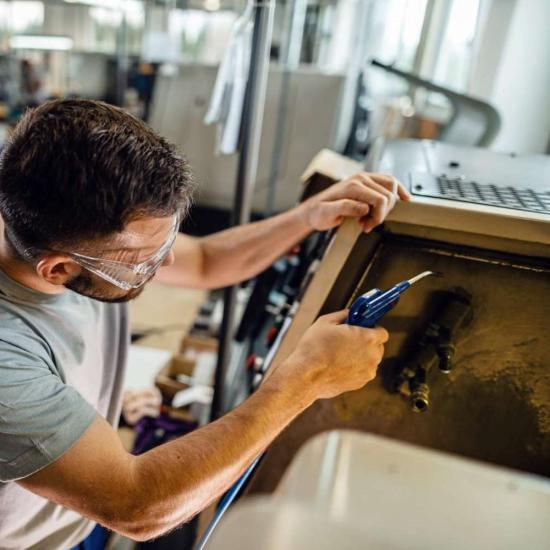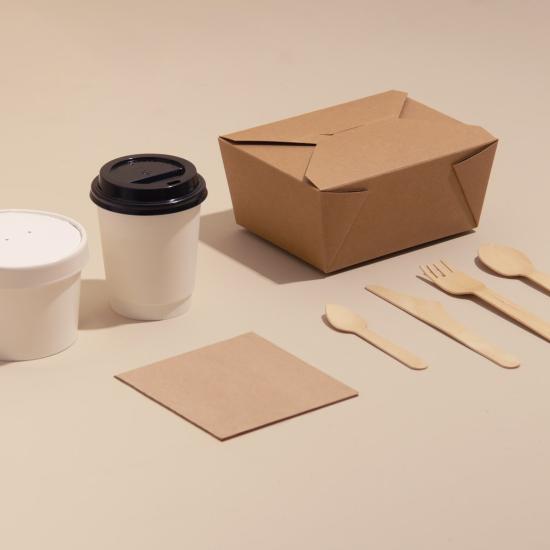The passion for sustainability has conquered our society at high speed. Strong carbon-neutral legislative objectives are set with the intention of reducing the environmental impact for all industries. This is how we are aiming to achieve a 30% reduction in the materials footprint by 2030 in Flanders, and a fully circular economy by 2050. These plans are indeed ambitious and companies are working hard. Can composite materials contribute to accomplish these goals?
Composite materials support the efficient use of energy and materials due to their specific mechanical properties and resistance to corrosion. In many cases, the service life of composites is extended due to their high corrosion resistance. Large composite structures, including wind turbine blades, are literally the driving force behind renewable energy in a sustainable society.
Advantages are obstacles for recycling
In order to take full advantage of composites in a sustainable economy, we must consider their entire life cycle. The properties which ensure a sustainable use of materials during the service life should be given the attention they deserve at the composite material’s EOL. Lightweight properties are obtained by reinforcing polymers with fibres at microscopic level. Although such a microscopic mix makes composite materials unique for use in numerous products, it also involves quite some challenges. It is quite hard to separate the fibres from the composite material for use in another product. And since the fibre ‘supports’ the entire product structure where needed, this 'customised” fibre cannot readily be used in the same way in a different product.
Growing waste mountain tackled with circular approach
This side effects require careful thought in case of large thermoset structures, like wind turbine blades. About 80 to 90 percent of the turbine is recycled via the existing recycling methods at present. The remaining 10 to 20 percent is related to wind turbine blades, which are made of composite material. According to the CompositeLoop feasibility study conducted by Sirris, composite waste derived from offshore wind turbine blades in Belgium will amount to 12,000 tonnes by 2040. A significant flux will be released by onshore turbines from 2025, up to 3,000 tonnes/year in 2030. In Europe, volumes will reach 50,000 tonnes by 2022, rising to 43.5 million tonnes worldwide by 2050.
As the current methods of dumping and processing into cement clinker fail to capitalise on the value of composite waste, innovative solutions will be required to recycle these blades into high-quality materials in a circular approach. Doing this at reasonable cost requires a value chain of companies with a circular mindset which will make it possible to incorporate high-quality recycled materials into new processes and products. Sirris is currently setting up partnerships to consolidate the value chain for composite materials, and is working with companies to find alternative materials for lightweight products.
Thermoplastics
A possible alternative could be a thermoplastic composite. The advantage of thermoplastics is that it can be processed an infinite number of times. Cutting the material results, for example, in very interesting semi-finished products for injection moulding applications. Another plus is that thermoplastic processes do not involve the use of harmful chemicals, while their automatability makes production in our country feasible.
Together with KU Leuven, Sirris supports the transition to thermoplastic composites with a recent investment in a hydraulic press. In addition, Sirris shares process equipment for thermoplastic composites with several companies. Sirris wants to join companies with a circular mindset in the lab and provide a platform where they can work together on innovative and hands-on projects. This can be achieved not only through joint investments in process technologies, but also through learning networks, workshops and training courses. All this is supported by research projects on biocomposites, 3D printing of thermoplastic composites and inductive welding technologies.
Time for action!
In the next few months, we will be publishing several blogs that will discuss the above themes in more detail.
In this context, Sirris SLC-Lab and Agoria invite you to an event on 'Innovation with new (composite) materials for the circular economy' on 21 April 2022. Circular economy, thermoplastic composites, recycling and automation will extensively be discussed. Several presentations are scheduled to take place there. We are looking forward to inspiring contributions on innovation with materials including from Daniël Peirsman (former director at AB Inbev), Michaël Callens (CEO at Rein4ced) and Jan Verhaeghe (General Manager at Agesia).
After the presentations, several demonstrations at our lab will introduce you to current innovation projects in our local composites world. Or you can get to know our new hydraulic press with robot, which will run a telling demonstration. During a lab visit we want to show you that sharing infrastructure not only saves costs, but that it can also be an inspiration, that cooperation across value chains can create win-win situations, and that working hands-on and innovation with materials go hand in hand in a circular economy.
Contact person Agoria: Kevin Poelmans, kevin.poelmans@agoria.be




